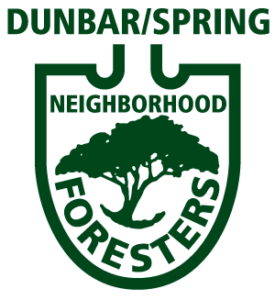Neighbor Maria Legarra who has lived in Dunbar/Spring since the 1966 told Brad Lancaster that in the late 1970s, the 1980s, and the early 1990s there were many sections of the neighborhood lacking trees and other vegetation, and that these areas were oddly quiet as there was no bird song. But now, grinning broadly, she tells me that bird song is abundant and getting more so still, thanks to all the Neighborhood Forester-organized plantings from 1996 to today—and the wildlife it attracts.
By planting a wide diversity of plants native to this area where we live, work, and play; we are able to bring the beauty and abundance of the Sonoran Desert to us here in the urban core. We don’t have to leave to find this life “out there.”
Instead, we are able to grow it right here—at home. Thus, home becomes richer and more alive.
After reforesting the once barren public right-of-way adjoining Brad and his brother Rodd’s property (see figures 2A – 3B at the top of this page) with native vegetation, dozens of species of native birds, pollinators, butterflies, and more returned to their regrown habitat.
Some of these birds travel thousands of miles each year to pay a visit as Tucson and our neighborhood is located along major migration paths. For example, the Wilson’s Warbler is a small bird that migrates from Central America to Alaska and back each year. And it needs to refuel along its journey. Our native mesquite trees are an oasis, because the Wilson’s Warbler can increase its body weight by 10 to 20% in just a couple of days of hanging out in a single velvet mesquite tree and feeding on the abundant insect life around it.
A native velvet mesquite tree supports over 60 species of native pollinators (which co-evolved with the native tree and its blooming times), while a non-native mesquite tree in Tucson only supports about a dozen native pollinators.

Solitary bees often sleep in the flowers at night which close up like a tucked-in blanket. There are about 1,000 species of native solitary bees in the Sonoran Desert. Let’s help grow, rather than destroy their habitat.
Photo: Brad Lancaster
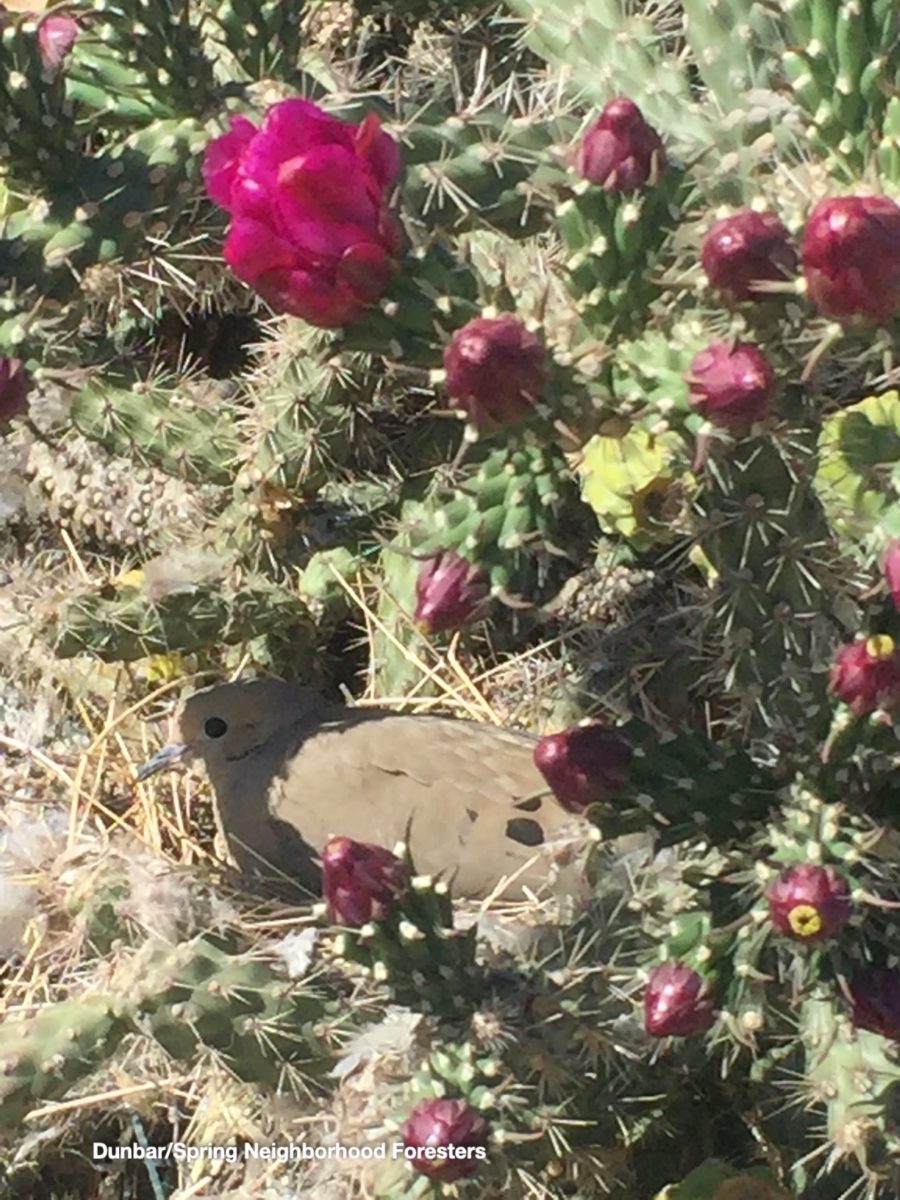
Cholla cactus grows great nesting sites for native birds in the urban environment because cats don’t climb cholla cactus. Flower buds surrounding the nesting dove are at the perfect stage for harvesting, but we’ll let her be.
Photo: Brad Lancaster
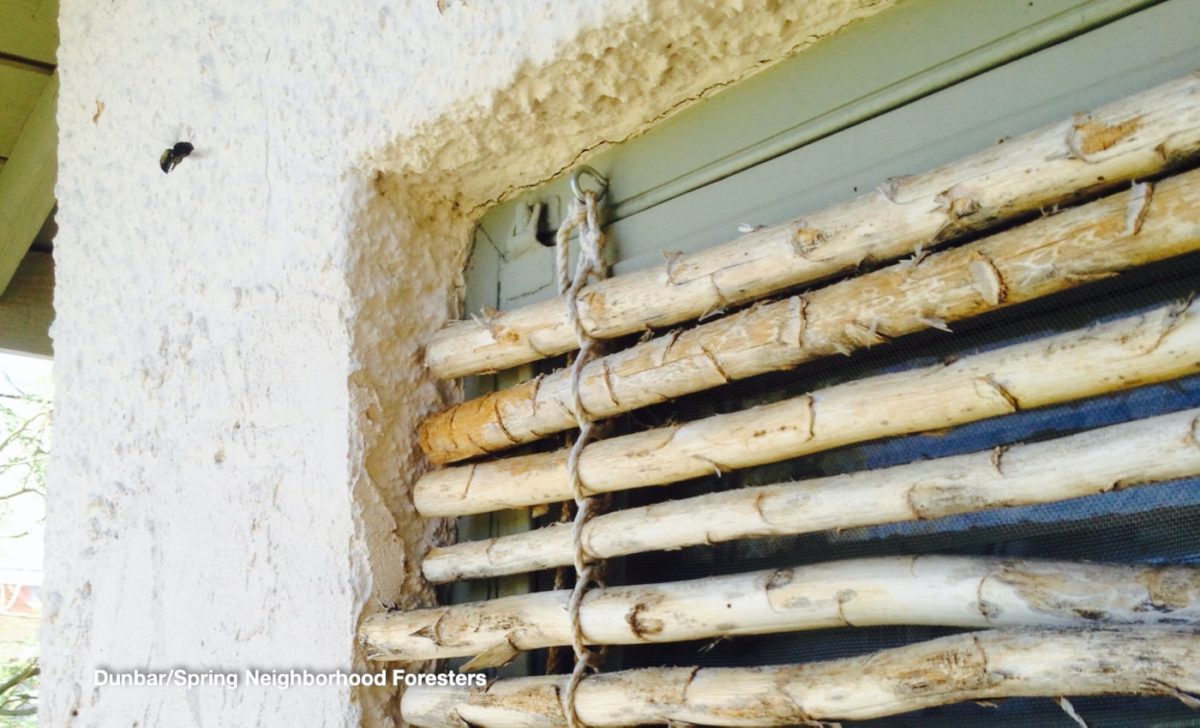
Photo: Brad Lancaster

Photo: Brad Lancaster
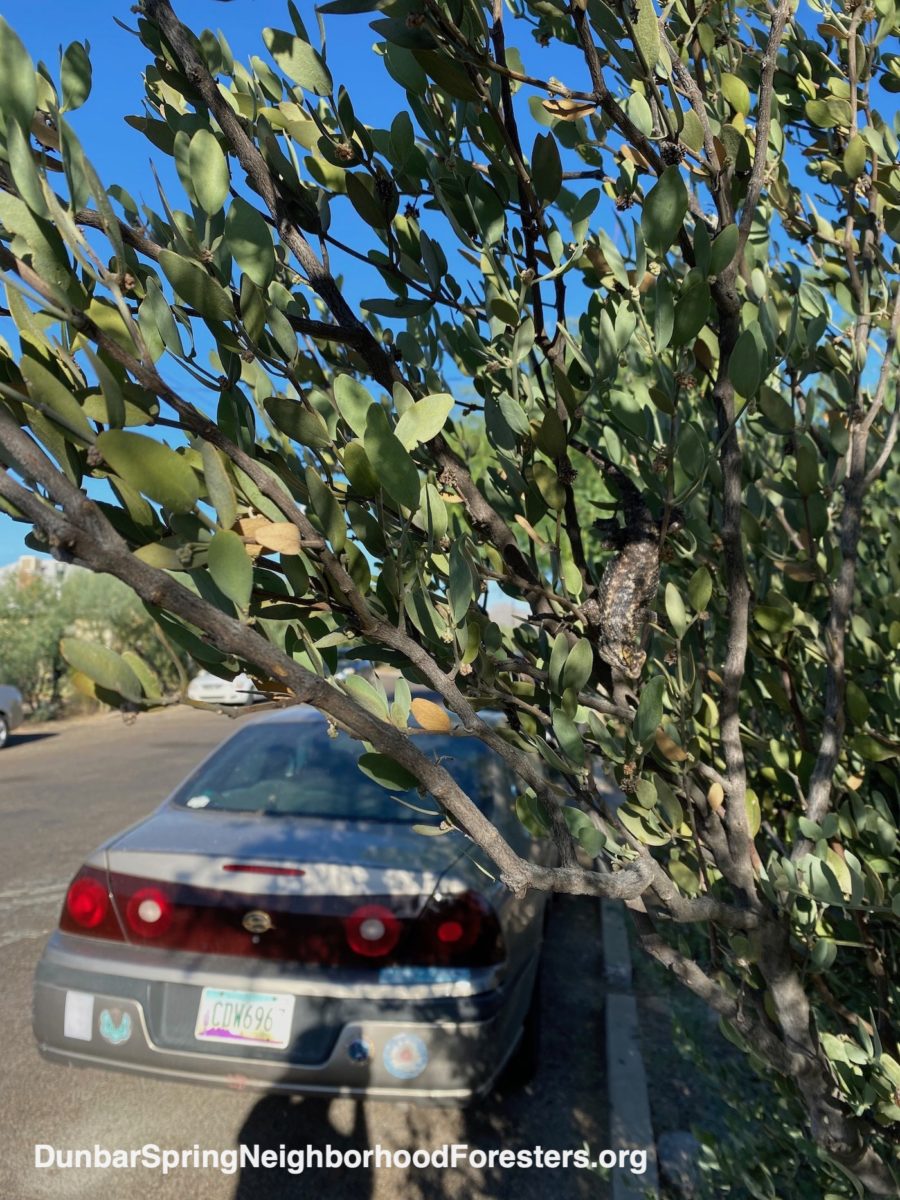
Life returned to the once barren public right-of-way. The vegetation is freely irrigated with street runoff redirected to street-side rain gardens.
Photo: Brad Lancaster
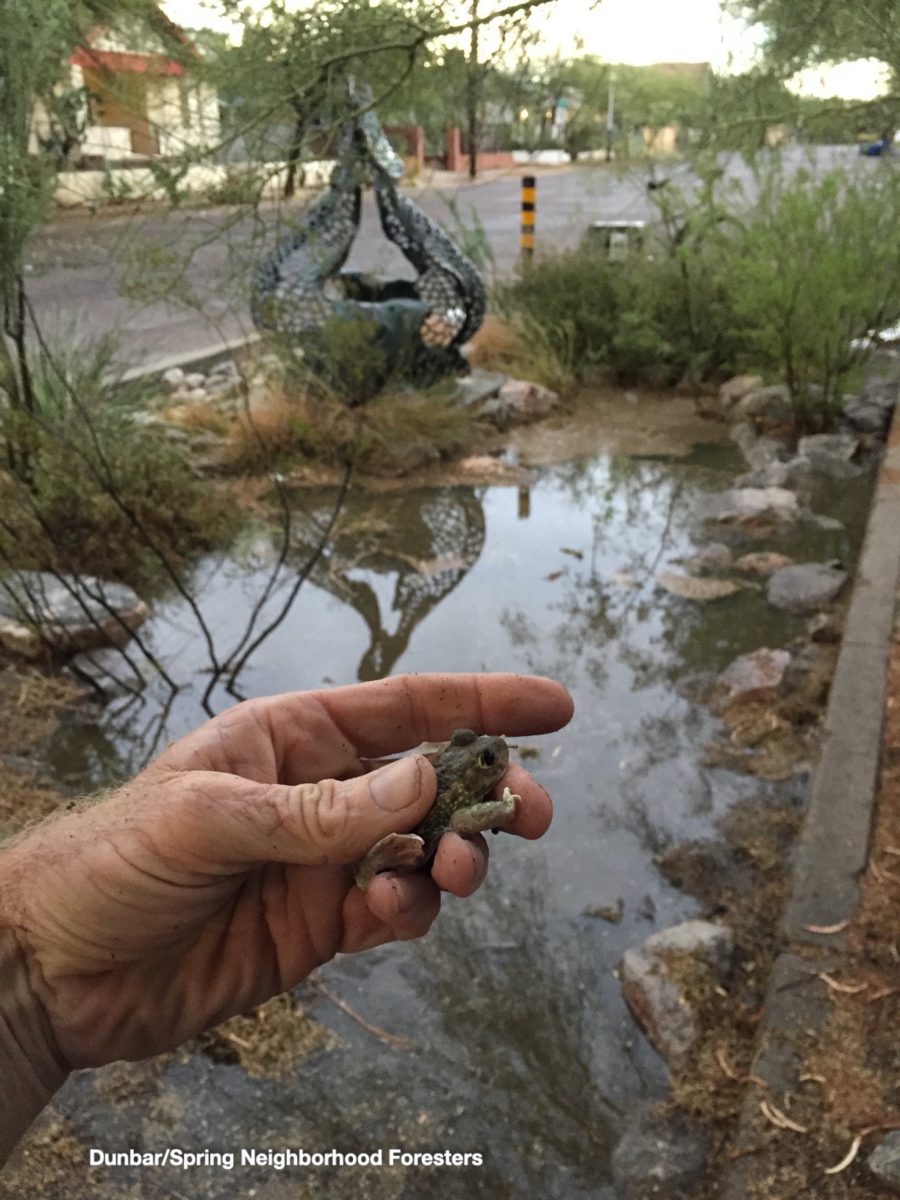
Photo: Brad Lancaster
To learn how you can enhance wildlife habitat at home and in the neighborhood…
• Sign up to be notified of our events
• Sign up for Tucson Audubon’s Habitat at Home program
